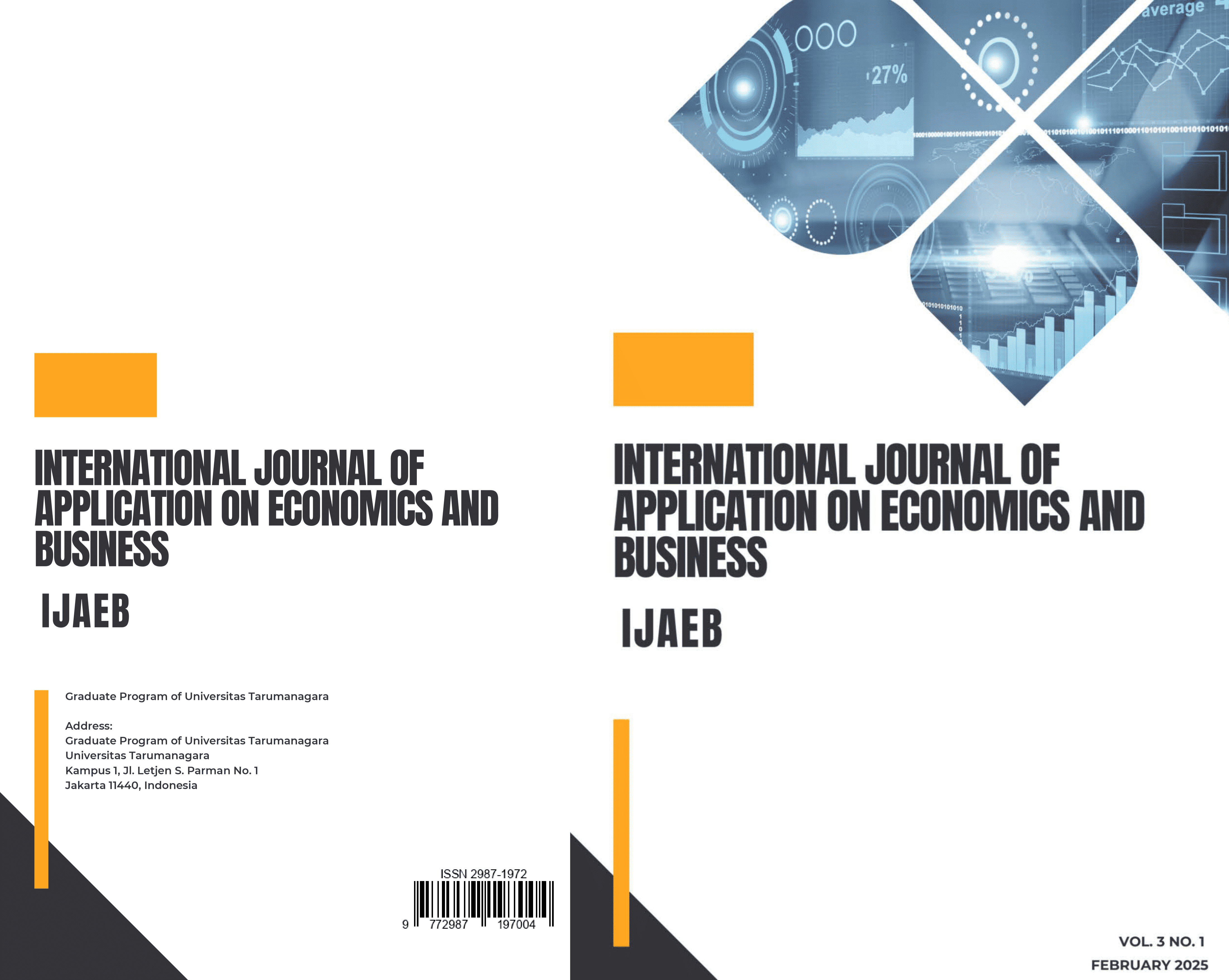UNDERSTANDING EMPLOYMENT CONSTRUCTS ACROSS BORDERS: A CROSS-NATIONAL COMPARISON OF MALAYSIA AND INDONESIA
Main Article Content
Abstract
In today’s digital age, digital literacy has emerged as a vital skill that shapes employability and workforce preparedness. The research examines the impact of digital literacy on employability among employees in Malaysia and Indonesia through a quantitative methodology and purposive sampling. Data were collected from 469 participants (238 Malaysians and 231 Indonesians) via structured questionnaires. Results show that nationality does not significantly moderate the link between digital literacy and employability, suggesting that perceptions of these constructs are consistent in both countries. This finding implies that initiatives to improve digital literacy can be applied similarly across these contexts. The study highlight the consistent relationship between digital literacy, employability, and related factors such as media literacy and perceived ease of use across different nationalities. For managers, policymakers, educators, and corporate trainers, this suggests that standardized frameworks may be effective in fostering digital skills and employability, supporting a cohesive regional strategy.
Article Details

This work is licensed under a Creative Commons Attribution-NonCommercial-ShareAlike 4.0 International License.
This journal provides immediate open access to its content on the principle that making research freely available to the public supports a greater global exchange of knowledge.
IJAEB by Graduate Program of Universitas Tarumanagara is licensed under a Creative Commons Attribution-NonCommercial-ShareAlike 4.0 International License.. Permissions beyond the scope of this license may be available at https://journal.untar.ac.id/index.php/ijaeb
References
Ajzen, I., & Fishbein, M. (1980). Understanding Attitudes and Predicting Social Behavior. Prentice-Hall.
Awang, Z. (2014). Structural Equation Modeling Using AMOS, University Teknologi MARA Publication Center, Shah Alam.
Costello, A. B., & Osborne, J. W. (2005). Best practices in exploratory factor analysis: four recommendations for getting the most from your analysis. Practical Assessment, Research and Evaluation, 10(7), 1-9.
Davis, F. D. (1989). Perceived usefulness, perceived ease of use, and user acceptance of information technology. MIS Quarterly, 13(3), 319-340.
European Commission. (2016). Europe's Digital Progress Report 2016. Brussels. Retrieved from https://ec.europa.eu/digital-single-market/en/download-scoreboard-reports
Faul, F., Erdfelder, E., Lang, A. G., and Buchner, A. (2007). G* power 3: a flexible statistical power analysis program for the social, behavioral, and biomedical sciences. Behav. Res. Methods 39, 175–191. https://doi: 10.3758/BF03193146
Ferrari, A. (2012). Digital Competence in Practice: An Analysis of Frameworks. JRC Technical Report, European Commission - Joint Research Centre, Publications Office of the European Union.
Field, A. (2013). Discovering Statistics Using IBM SPSS Statistics (4th ed.). Sage Publications Ltd, London.
Fornell, C., & Larcker, D.F. (1981). Evaluating structural equation models with unobservable variables and measurement error. Journal of Marketing Research, 18(1), 39-50. https://doi.org/10.2307/3151312
Gilbert, S. (2017). Information literacy skills in the workplace: examining early career advertising professionals. Journal of Business and Finance Librarianship, 22(2), 111-134.
Hair, J.F., Black, W.C., Babin, B.J., & Anderson, R.E. (2010). Multivariate Data Analysis (7th ed.). Pearson, NJ.
Hair, J.F., Hult, G.T.M., Ringle, C.M., & Sarstedt, M. (2013). A Primer on Partial Least Squares Structural Equation Modeling (PLS- SEM), Sage Publications, CA.
Hair, J.F., Ringle, C.M., & Starstedt, M. (2011). PLS-SEM: indeed a silver bullet. Journal of Marketing Theory and Practice, 19(2), 139-151. https://doi.org/10.2753/MTP1069-6679190202
Hargittai, E. (2010). Digital na(t)ives? Variation in internet skills and uses among members of the 'Net generation'. Sociological Inquiry, 80(1), 92-113.
Ho, R. (2006). Handbook of Univariate and Multivariate Data Analysis and Interpretation with SPSS, Chapman & Hall/CRC, Taylor & Francis Group, Boca Raton, FL.
Hu, L., & Bentler, P.M. (1999). Cutoff criteria for fit indexes in covariance structure analysis: Conventional criteria versus new alternatives. Structural Equation Modelling, 6, 1-55.
Hutcheson, G.D., & Sofroniou, N. (1999). The Multivariate Social Scientist, Sage, London.
Joreskog, K. G., & Sorbom, D. (1989). LISREL 7: A guide to the program and applications. Chicago: SPSS, Inc.
Kang, H. (2021). Sample size determination and power analysis using the G* power software. J. Educ. Eval. Health Prof. 18(17). https://doi: 10.3352/jeehp.2021.18.17
Morris, N. S., and Rosenbloom, D. A. (2017). Defining and understanding pilot and other feasibility studies. The American journal of nursing, 117, 38–45.
Ng, W. (2012). Can we teach digital natives digital literacy? Computers and Education, 59(3), 1065-1078.
Nikou, S., De Reuver, M., & Mahboob Kanafi, M. (2021). Workplace literacy skills—how information and digital literacy affect adoption of digital technology. Journal of Enterprise Information Management, 34(6), 1649-1672. https://doi.org/10.1108/JEIM-01-2020-0010
Nunnally, J.C., & Bernstein, I.H. (1994). Psychometric Theory, McGraw-Hill, New York, NY.
OECD. (2016). New Skills for the Digital Economy: Measuring the Demand for ICT Skills at Work. OECD Digital Economy Papers No. 258, OECD Publishing.
Podsakoff, P.M., & Organ, D.W. (1986). Self-reports in organizational research: problems and prospects. Journal of Management, 12(4), 531-544. https://doi.org/10.1177/014920638601200408
Reddy, P., Chaudhary, K., & Hussein, S. (2023). A digital literacy model to narrow the digital literacy skills gap. Heliyon, 9, e14878.
Simon, M., Meeus, W., & T’sas, J. (2017). Developing a questionnaire for assessing teachers' competencies in media literacy education. Journal of Media Literacy Education, 9(1), 99-115.
Taylor, S., & Todd, P. A. (1995). Assessing IT usage: The role of prior experience. MIS Quarterly, 19(4), 561-570.
Ukwoma, S., Iwundu, N.E., & Iwundu, I. E. (2016). Digital literacy skills among students of UNN: Implications for effective learning and performance. New Library World, 117(11/12), 702-720.
Venkatesh, V., & Davis, F. D. (2000). A theoretical extension of the technology acceptance model: Four longitudinal field studies. Management Science, 46(2), 186-204.
World Economic Forum. (2016). The Future of Jobs. Employment, Skills and Workforce Strategy for the Fourth Industrial Revolution. Geneva.
Worthington, R.L., & Whittaker, T.A. (2006). Scale development research: a content analysis and recommendations for best practices. Counseling Psychologist, 34(6), 806-838. https://psycnet.apa.org/doi/10.1177/0011000006288127
Yorke, M. (2004). Employability in Higher Education: What It Is – What It Is Not. Higher Education Academy/ESECT.
Zahoor, N., Zopiatis, A., Adomako, S., & Lamprinakos, G. (2023). The micro-foundations of digitally transforming SMEs: Exploring the interplay between digital literacy, technology, and managerial attributes. Journal of Business Research, 159(113755), 1-12.
Zahoor, Z., et al. (2023). Digital literacy and employability: A comparative study. Journal of Information Technology Education: Research, 22, 123-140.



